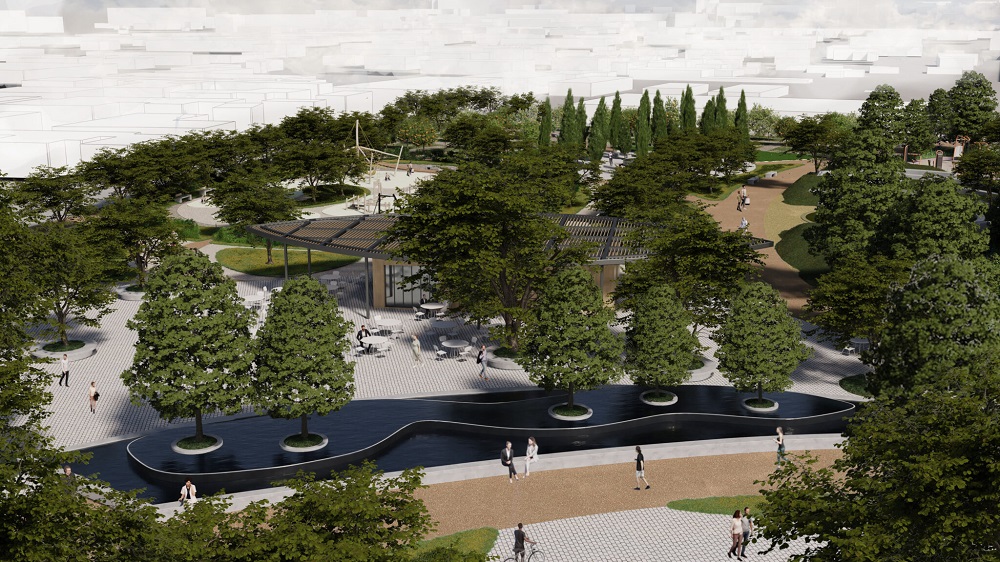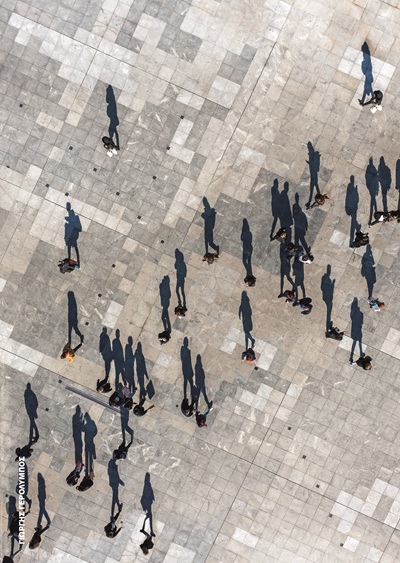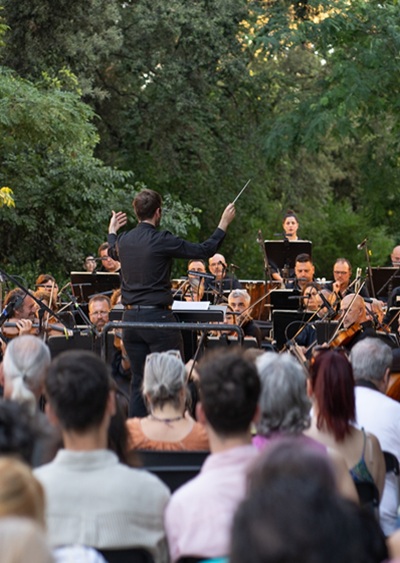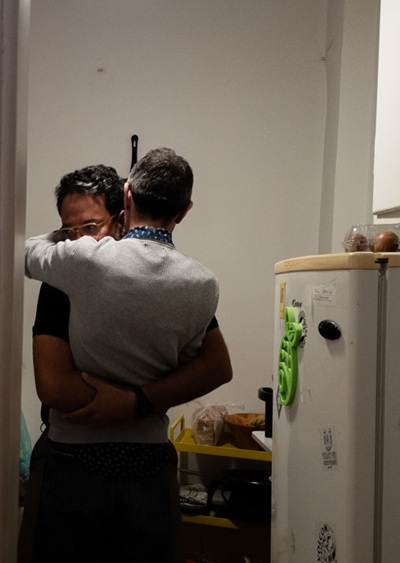
The plans and the study for the landscaping of the public green spaces in the area of Votanikos, in the framework of the Double Redevelopment project, were unanimously approved by the Athens City Council. The landscaping of the green spaces in Eleonas is a project of fundamental importance for the city with a trans-local significance that will lead to the ecological and aesthetic upgrading of the degraded former industrial area, with the ‘reintegration of nature’ into the urban fabric of Athens.
At the core of the plan is the creation of the largest urban park that has been created in Athens in the last hundred years. It is 215 acres of greenery in a total area of 260 acres. To give an idea of the size of the park, it should be noted that the Pedion Areos Park, which was created in 1934, is 277 hectares (including the Finopoulos Hill).
With the creation of this park in the west of Athens, the imaginary circle of the city’s large green “lungs” (Lycabettus, National Garden, Plato’s Academy, etc.) is completed, thus contributing decisively to the shielding and resilience of Athens against the consequences of the climate crisis and the effects of the destruction of the natural wealth of Parnitha.
“Step by step, we are shielding the -until recently- unprotected city against the dangers created by the climate crisis and its effects. The project of the Double Redevelopment with the new Panathinaikos stadium in Votanikos as a “vehicle” will provide Athens with two very important oxygen lungs. In the industrial area of Eleonas and in the densely populated area of Alexandras Avenue. Our commitments are being kept, words become deeds”, stressed the Mayor of Athens, Kostas Bakoyannis, speaking at the city council.
The new large urban lung in combination with the planned upgrading of the infrastructure (road works, network construction, pavements, etc.), compose the holistic regeneration of the area of Eleonas and create an authentic landscape, resistant to the effects of the climate crisis.
For his part, the Deputy Mayor of Urban and Building Infrastructure and Urban Design, Vassilis Axiotis, stressed: “We had said that the Panathinaikos stadium project in Votanikos would have a double objective for us. He said, “We had two main objectives: to expand the city, and to grow Panathinaikos. This is exactly the commitment we are putting into practice with today’s approval by the Municipal Council of the Municipality of Athens of the study for the creation of green spaces in the area of the Double Redevelopment and the wider area of Eleonas. We are extending the city to the “forgotten” neighborhood of Votanikos. The new modern Metropolitan Park is our legacy for the future generations of Athens”.
In particular, the design of the new park is governed by the most modern principles of sustainability, achieving the improvement of the microclimate and contributing to the reduction of the urban heat island phenomenon.
During the landscaping, 3,563 large evergreen and deciduous trees and 102,000 shrubs will be planted. At the same time, 18,520 m2 of lawn, 1,560 m2 of Mediterranean meadow, 800 m2 of rain gardens will be installed, and a 950 m2 pond will be created to serve as a biodiversity cradle.
The revival of the historic olive grove, the enhancement of urban biodiversity and the creation of nesting sites for urban birds, the creation of ecological enclosures to ensure conditions for the natural regeneration of new seedlings from seeds.
The park has been designed to ensure appropriate microclimatic conditions, creating a cool natural environment in which visitors can enjoy their walk and relax in the city.
Native plants of the Greek flora, Mediterranean shrubs, autonomous areas of natural regeneration, rain gardens at designated points for rainwater management, community crops, urban forests and green islands, a lake, as well as multiple other water features, make up a park of environmental awareness and education for visitors. At the same time, a key concern is to enhance the biodiversity of both the flora and fauna of the area.
Hills will be created in the park, resulting from the use of the project’s rubble and aggregates, which will contribute to the positive ecological footprint of the new green surfaces, as well as reduce transport for the removal of materials from the project site.
The spaces in which the central squares and plazas that will host refreshment areas will be created will be minimal, with an emphasis on the use of bioclimatic and environmentally friendly materials, characterized by both water permeability and naturalness.
The modern urban park of Eleonas will give visitors the opportunity to escape from everyday life and, depending on the time they have, to take advantage of the different experiential opportunities it offers.







Leave A Comment